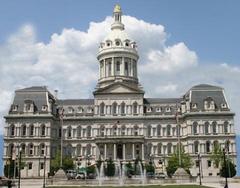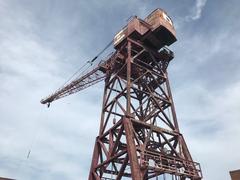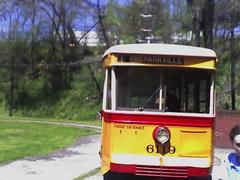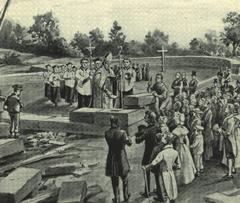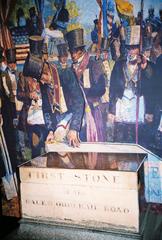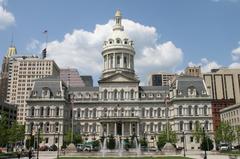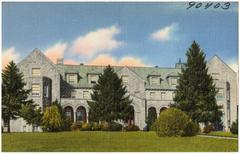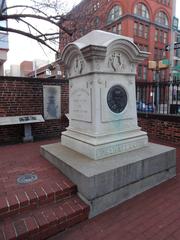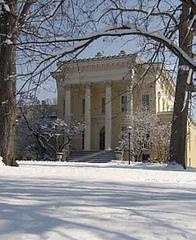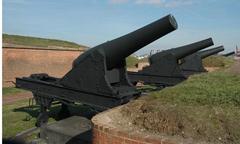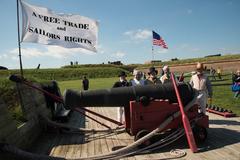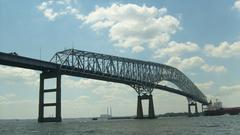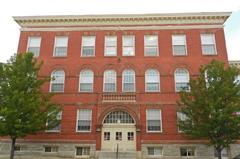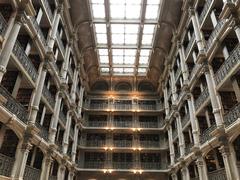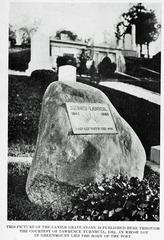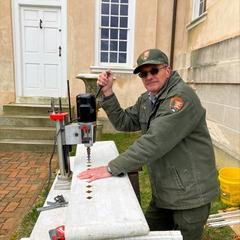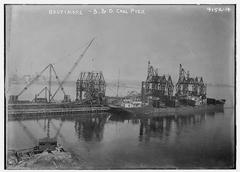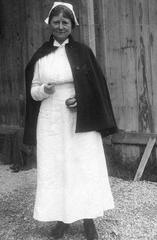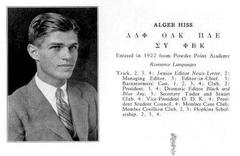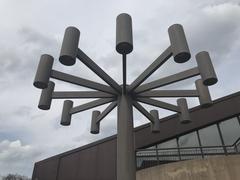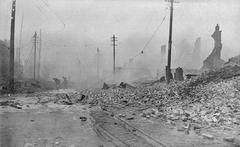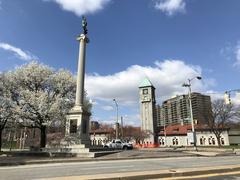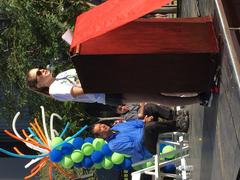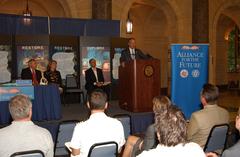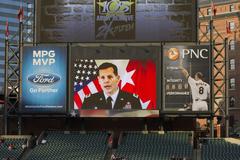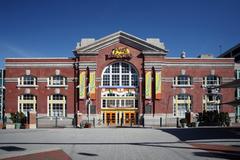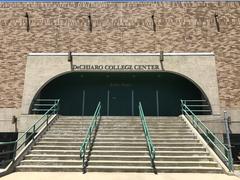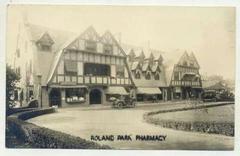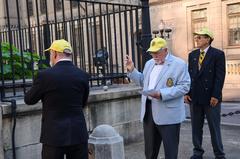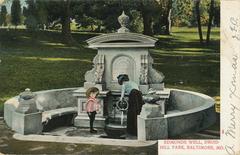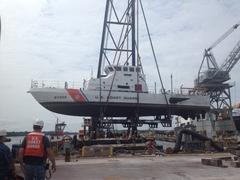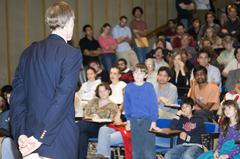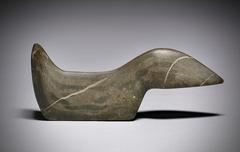University of Maryland Medical Center Visiting Hours, Tickets, and Baltimore Historical Sites Guide
Date: 03/07/2025
Introduction
Located in the heart of downtown Baltimore, the University of Maryland Medical Center (UMMC) is a pillar of medical innovation, academic achievement, and historical importance. Established in 1823 as the Baltimore Infirmary, UMMC is closely linked to the University of Maryland School of Medicine, the nation’s oldest public medical school. Today, UMMC is a premier teaching hospital with 789 beds, renowned for pioneering specialized care, including the nation’s first dedicated trauma center (UMMC Official Website).
For patients, visitors, healthcare professionals, or those interested in history, UMMC offers a unique window into the evolution of American medicine. The campus blends state-of-the-art facilities with nearly two centuries of healthcare advancements. Its proximity to Baltimore’s top attractions—such as the Inner Harbor, Fort McHenry, and the Walters Art Museum—makes it an excellent starting point for exploring the city’s rich heritage.
This guide offers comprehensive information on visiting hours, appointment scheduling (UMMC “tickets”), accessibility, parking, and special events. It also highlights UMMC’s leadership in healthcare, its economic and community impact, and its role as a model for integrated health systems (The Baltimore Banner).
Plan your visit with confidence, using practical tips on navigating the campus, public transportation, and exploring historic Baltimore. Consider downloading the Audiala app for guided tours and real-time updates to enhance your experience.
Table of Contents
- Introduction
- Brief History of UMMC
- Visitor Information
- Getting There and Parking
- Accessibility
- Nearby Attractions
- Academic and Medical Leadership in Maryland
- Pioneering Clinical Programs and Centers of Excellence
- Advancing Health Equity and Community Well-being
- Innovation and Economic Impact
- National Model for Integrated Health Systems
- Research, Education, and Global Impact
- Commitment to Continuous Improvement
- University of Maryland Medical Center Campuses: Visitor Guide & Facilities Overview
- Frequently Asked Questions (FAQ)
- Conclusion and Call to Action
Brief History of UMMC
UMMC began in 1823 as the Baltimore Infirmary, the first hospital in the U.S. built by a medical school. Closely tied to the University of Maryland School of Medicine (founded 1807), the hospital has grown from a modest 60-bed facility to a leading 789-bed academic medical center. UMMC is a pioneer in specialized care, including the creation of the nation’s first dedicated trauma center.
Visitor Information
Visiting Hours
UMMC operates as an active medical facility rather than a museum. Public areas are generally accessible Monday through Friday, 8:00 AM to 6:00 PM. For historic exhibits or guided tours, prior arrangement is necessary.
Guided Tours and Special Events
UMMC offers occasional guided tours and special events, often scheduled during Baltimore historic site festivals or by appointment through the School of Medicine’s outreach programs. Contact the visitor information desk or visit the official UMMC website for current offerings.
Tickets and Admission
There is no general admission fee to visit public areas of UMMC. Some tours or special exhibits may require advance registration or a nominal fee.
Photography Guidelines
Visitors may photograph historic architecture and commemorative plaques, especially near the original hospital site at Lombard and Greene streets. Please respect patient privacy and avoid restricted areas.
Getting There and Parking
UMMC is located at Greene and Redwood Streets in downtown Baltimore. It is easily accessible by public transportation, including Light Rail and bus routes. Visitor parking is available in nearby garages, such as the University of Maryland Medical Center Garage, with hourly rates. For detailed parking and transit options, visit the UMMC website.
Accessibility
The UMMC campus is fully wheelchair accessible, with elevators, ramps, and accessible restrooms. Visitors needing special accommodations should contact visitor services in advance.
Nearby Attractions
While at UMMC, explore nearby Baltimore landmarks such as the Health Sciences and Human Services Library, the University of Maryland School of Nursing, and the Inner Harbor district. These sites offer cultural enrichment and complement the hospital’s historical significance.
Academic and Medical Leadership in Maryland
UMMC is the flagship of the University of Maryland Medical System (UMMS), delivering approximately 25% of hospital-based care in Maryland (The Baltimore Banner). Affiliated with the University of Maryland School of Medicine, UMMC fosters collaboration among clinicians, researchers, and students to advance patient care and biomedical science (PR Newswire).
Pioneering Clinical Programs and Centers of Excellence
UMMC is home to acclaimed programs such as the R Adams Cowley Shock Trauma Center, a global leader in emergency and critical care (The Baltimore Banner), and the Marlene and Stewart Greenebaum Comprehensive Cancer Center. Other specialties—cardiology, neurology, orthopedics, and transplantation—are consistently ranked among the nation’s best (Patch).
Advancing Health Equity and Community Well-being
UMMC’s outreach initiatives target health disparities and support Baltimore’s diverse communities. Collaborations with schools and local organizations expand healthcare access and improve outcomes (The Baltimore Banner).
Innovation and Economic Impact
Located within the University of Maryland BioPark, UMMC’s Edward & Jennifer St. John Center for Translational Engineering and Medicine accelerates the development of medical technologies (Today UMD). As a key innovation hub, UMMC supports Baltimore’s life sciences sector and contributes significantly to the local economy (PR Newswire).
National Model for Integrated Health Systems
As a private, non-profit system since 1984, UMMS—including UMMC—has become a model for public-private healthcare partnerships, enhancing efficiency and setting standards for integrated care (The Baltimore Banner).
Research, Education, and Global Impact
The University of Maryland School of Medicine drives UMMC’s research and educational mission. Faculty and students lead in fields such as regenerative medicine, artificial intelligence in healthcare, and personalized therapies (PR Newswire).
Commitment to Continuous Improvement
UMMC is committed to continuous quality improvement, workforce development, and data-driven care. Collaborations with private partners help optimize emergency operations and maintain financial sustainability (The Baltimore Banner).
University of Maryland Medical Center Campuses: Visitor Guide & Facilities Overview
Main Campuses and Layout
UMMC includes two main campuses:
- Downtown Campus (22 S. Greene Street): The flagship 800-bed hospital, home to advanced care, research, and education.
- Midtown Campus: A 200-bed teaching hospital with a community-focused approach (UMMC News).
The Downtown Campus is part of the University of Maryland, Baltimore (UMB), a 71-acre complex that includes seven professional schools and interconnected clinical, research, and educational facilities (UMB Facilities).
Key Facilities and Buildings
- R Adams Cowley Shock Trauma Center: Internationally acclaimed for trauma care.
- Marlene and Stewart Greenebaum Comprehensive Cancer Center.
- Health Sciences Research Facility III (HSRF III): The largest building in the University System of Maryland.
- University of Maryland School of Medicine: The nation’s first public medical school.
Accessibility and Navigation
UMMC is fully accessible, with ramps, elevators, and clear signage. For additional needs, contact the information desk or UMB Facilities Service Center.
Parking and Transportation
Multiple garages offer visitor parking. The campus is accessible via Baltimore’s Light Rail, Metro Subway, and bus lines. Complimentary shuttles connect the campuses and UMB.
Visitor Tips
- Review maps and parking details on the UMMC website.
- Arrive during visiting hours and check in at the information desk.
- Explore on-site or nearby dining options.
- Use shuttle services for campus navigation.
- Combine your visit with nearby historic sites like the Inner Harbor and Fort McHenry.
Nearby Baltimore Historical Sites
- Fort McHenry National Monument: Site of the Star-Spangled Banner.
- Inner Harbor: Waterfront attractions, museums, and dining.
- Walters Art Museum: Renowned art collections.
Frequently Asked Questions (FAQ)
Q: What are UMMC’s visiting hours?
A: Generally, 9:00 AM to 9:00 PM daily, but check with specific units.
Q: Do I need tickets or an appointment to visit?
A: No tickets are required for general visiting; some tours or clinics require appointments.
Q: Is the campus wheelchair accessible?
A: Yes, fully accessible.
Q: Are there guided tours?
A: Public tours are limited due to privacy, but special events occur periodically.
Q: Where can I park?
A: Multiple garages offer visitor parking.
Q: Are there campus dining options?
A: Yes, plus many nearby restaurants.
Visiting the Washington Monument in Baltimore: Your Complete Guide
Introduction
The Washington Monument in Baltimore is a key city landmark and the centerpiece of the Mount Vernon neighborhood. Erected between 1815 and 1829, it was the first major monument to honor President George Washington. Designed by Robert Mills, the monument stands 178 feet tall and provides panoramic city views.
Visiting Hours and Ticket Information
- Open: Tuesday–Sunday, 10:00 AM–5:00 PM (closed Mondays and major holidays).
- Tickets: Free for grounds and visitor center. Timed tickets required for the observation deck (Maryland Historical Society website).
- Guided Tours: Weekends at 11:00 AM, 1:00 PM, and 3:00 PM.
Getting There and Parking
- Transit: Light Rail (Mount Vernon Station) and MTA bus routes.
- Parking: Metered street parking and public garages nearby.
Accessibility
The monument grounds and visitor center are wheelchair accessible; the observation deck is only accessible via stairs. Service animals are permitted.
Amenities and Visitor Services
- Visitor center with exhibits, restrooms, and a gift shop.
- Excellent photo opportunities around Mount Vernon Place.
Nearby Attractions
- Peabody Library: Noted for its architecture.
- Baltimore Museum of Art: Renowned collections.
- Mount Vernon Place: Historic park.
- Numerous cafes and restaurants.
Special Events
Annual events include Independence Day celebrations, reenactments, and festivals (events calendar).
Tips for Visitors
- Reserve observation deck tickets early.
- Wear comfortable shoes for cobblestone streets and stairs.
- Check the weather for outdoor observation.
- Visit during off-peak hours for a better experience.
FAQ
Q: Is there an admission fee?
A: Grounds and visitor center are free; observation deck requires a ticket.
Q: Are children allowed?
A: Yes; supervise children under 12 on stairs.
Q: Are pets allowed?
A: Only service animals.
Q: Is photography allowed?
A: Yes, throughout the site.
Summary and Tips for Visiting UMMC
UMMC is a cornerstone of Baltimore’s healthcare and history, offering world-class facilities and a rich legacy. Visitors can expect accessible campuses, informative tours, and the chance to explore Baltimore’s renowned cultural sites. Plan your visit by consulting official resources, using mobile apps like Audiala, and following UMMC on social media for updates.
For more information, see the UMMC Visitor Guide and Maryland Manual On-Line.
References
- University of Maryland Medical Center Official Website
- University of Maryland Medical System CEO Letter – The Baltimore Banner
- Maryland Manual On-Line – UMMC
- UMMC News – Rare Spinal Tumor Surgery
- University of Maryland BioPark and CTEM Funding
- Maryland Historical Society – Washington Monument

